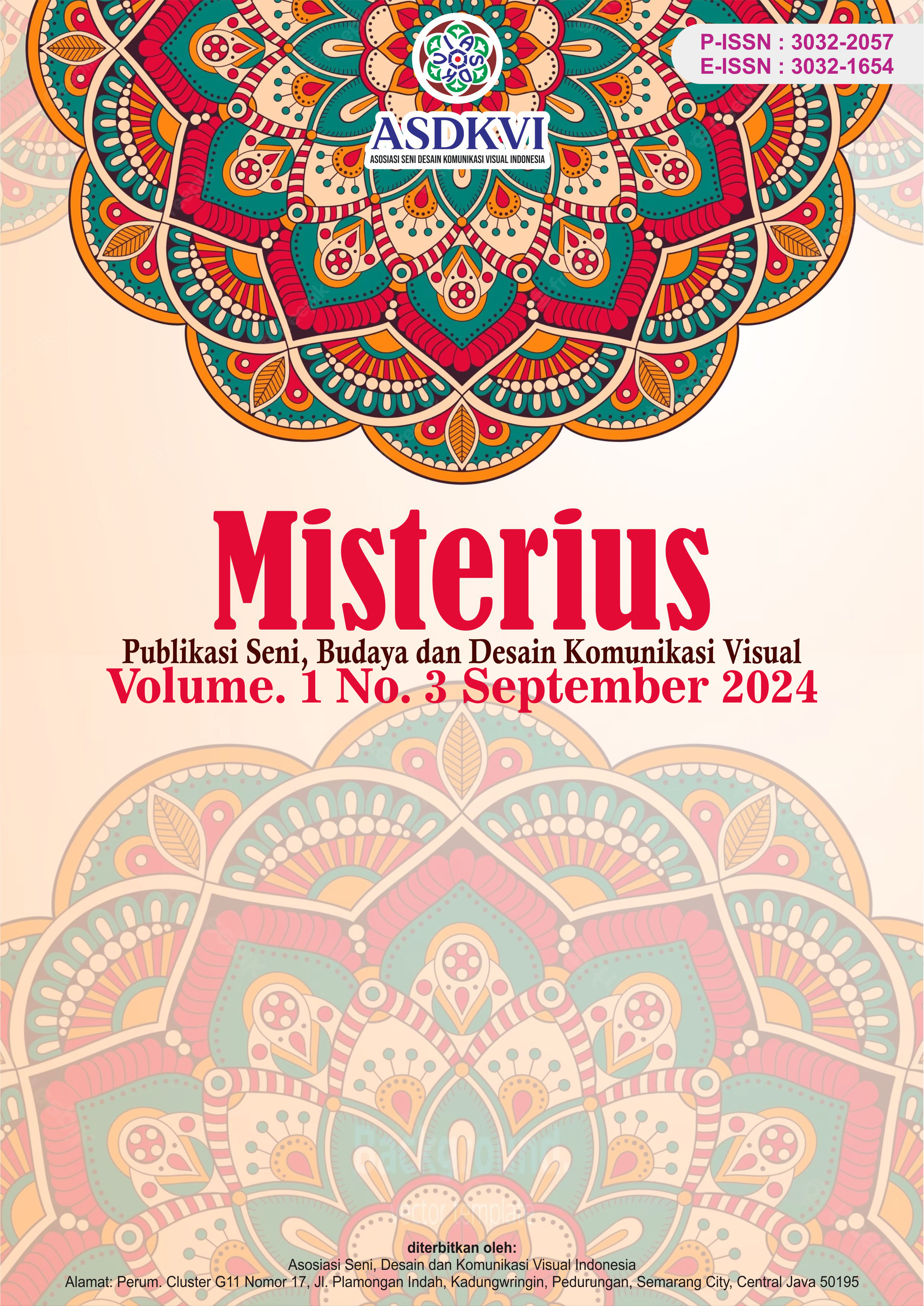Koreografi Tari Meonjai Padi di Sanggar Pinang Sinawa Kecamatan Ujungbatu
DOI:
https://doi.org/10.62383/misterius.v1i3.276Keywords:
Choreography, Meonjai Padi Dance, Sanggar Pinang SinawaAbstract
This study aims to reveal and describe the Choreography of the Meonjai Padi Dance at Sanggar Pinang Sinawa, Ujungbatu District. This type of research is qualitative research using a naturalistic approach. The research instrument is the researcher himself and is assisted by supporting instruments such as stationery and cameras. Data were collected through literature studies, observations, interviews and documentation. Data analysis techniques by means of data collection, data reduction, data presentation, and conclusion drawn. The results of the study show that the process of creating the Meonjai Padi Dance consists of ideas, exploration, improvisation and composition. The Meonjai Padi Dance was created based on ideas that were turned into a dance work as a performance. After finding the ideas and ideas of the Meonjai Padi Dance, the choreographer then made a description of the dance to be made. The Meonjai Padi Dance has 3 parts, namely the beginning as the opening of the dance, the middle and the end as the climax. In the Meonjai Padi Dance, the choreographer worked on movements that depicted the activities of the residents harvesting rice. This dance work also looks interesting with various floor patterns and group compositions so that the audience does not get bored in watching the performance and the dancers master weak movements and strong movements. The costumes used in the Meonjai Padi Dance are very simple because they depict people going to the rice fields. The music that accompanies the dancers' movements uses a fairly fast tempo with Malay verses. The property used in the Meonjai Padi Dance is a katidiang shaped like a basket.
References
Aisah, S. (2023). Koreografi Tari Galuik Salendang Sanggar Tuah Sakato di Kota Padang [Skripsi, Universitas Negeri Padang]. Padang: UNP.
Armila, F. (2022). Koreografi Tari Piring Rampak Baayun pada Sanggar Rantiang Tagok di Kota Padang [Skripsi, Universitas Negeri Padang]. Padang: UNP.
Bandem, I. M., & Murgiyanto, S. (1996). Teater Daerah Indonesia. Denpasar: Kanisius.
Ekaputri, M., & Darmawati, D. (2020). Tinjauan koreografi tari Silek Paarakan di Jorong Kampung Surau Kenegarian Gunung Selasih Kecamatan Pulau Punjung Kabupaten Dharmasraya. Jurnal Sendratasik, 9(4), 127–134.
Hartono. (2000). Peran Sanggar dalam Pengembangan Seni Tari. Yogyakarta: Lentera Budaya.
Indrayuda, I. (2017). Concept of Art Education: Developing Aesthetic Sensibility, Social and Situational Awareness.
Moleong, L. J. (2011). Metodologi Penelitian Kualitatif Edisi Revisi. Bandung: PT. Remaja Rosdakarya.
Pamuji, C. (2008). Bentuk dan Fungsi Pertunjukan Musik Rebana Ngafiyah di Desa Seling Kecamatan Karang Sambung Kabupaten Kebumen. Semarang: Unnes.
Sudarma, I. H. (2022). Tari Lenggang Rang Mudo di Sanggar Langkisau Kenagarian Painan Timur Kecamatan IV Jurai Kabupaten Pesisir Selatan: Kajian Koreografi [Skripsi, Universitas Negeri Padang]. Padang: UNP.
Sugiyono. (2011). Metode Penelitian Kuantitatif, Kualitatif dan R&D. Bandung: Alfabeta.
Suparjdjan. (1982). Pengantar Pengetahuan Tari. Jakarta: Proyek Pengadaan Buku Menengah Kejuruan, Departemen Pendidikan dan Kebudayaan.
Downloads
Published
How to Cite
Issue
Section
License
Copyright (c) 2024 Misterius : Publikasi Ilmu Seni dan Desain Komunikasi Visual.

This work is licensed under a Creative Commons Attribution-ShareAlike 4.0 International License.





